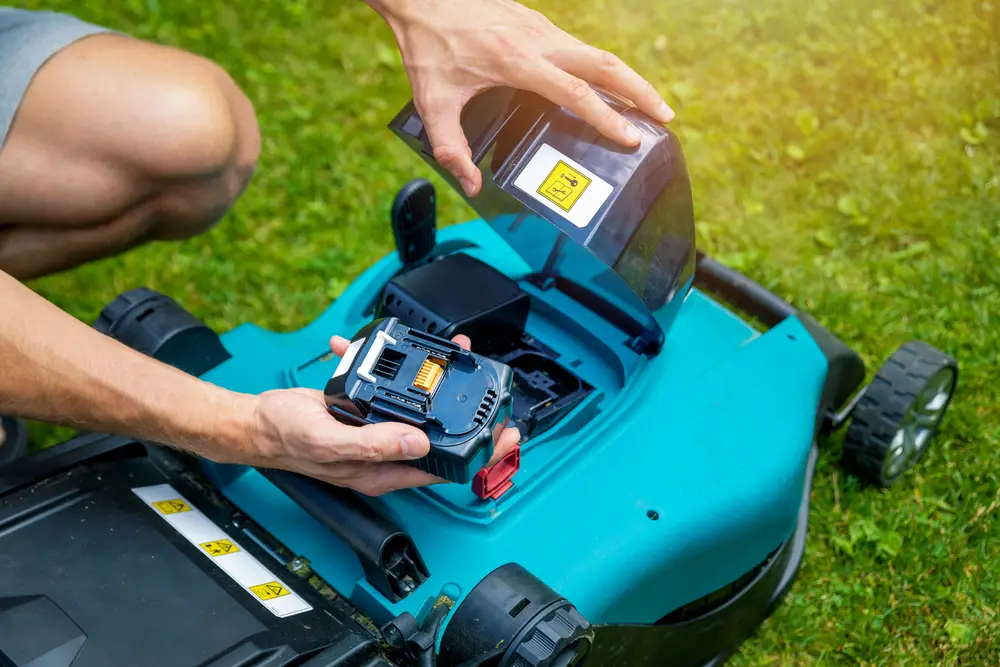Occasionally, you may need to perform maintenance on or replace your lawn mower’s battery. Knowing as much as you can about your lawn mower’s battery becomes an important part of that process then. An important part of that is knowing how many volts are in a lawn mower battery.
So, let’s start talking about lawn mower battery volts.
In this content you’ll learn:
How Many Volts Is A Lawn Mower Battery?

When it comes to lawn mower batteries, there are many different voltage possibilities. For example, you might have a 6-volt battery, a 12-volt, 24-volt, 36-volt, 40-volt, or even higher. You’ll often see this listed on the battery and in product descriptions as a number and then the letter V, such as 6V or 12V.
What do all these numbers mean though?
What Does The Number Of Volts Do?
In simple terms, the more volts, or voltage, a battery has, the more powerful that battery is going to be. It’s overused, but if you think of circuits as water pipes, then volts are essentially the water pressure being created. The more volts in a battery, the more powerful the flow of energy.
Should I Get A Lawn Mower Battery With More Volts?
No, we do not recommend this. Lawn mowers, even electric ones, are built with systems that use specific voltages. There are a few other problems here too.
One problem is that with electric lawn mowers, the replacement batteries you can buy will have the same voltage as the previous batteries. So, it’s not really possible to get higher-voltage batteries for those lawn mowers anyway. It is possible to get batteries with higher Amp-hours though, which will extend the runtime of a battery.
The other problem is that getting a higher-voltage battery might damage the system of a lawn mower. If you are determined to do this, we recommend letting a professional perform the operation.
How Can I Measure Volts In A Lawn Mower Battery?
When performing lawn mower maintenance, it’s a good idea to check on the health of your battery. Over time, batteries can wear down from use, and become less efficient. So, even though a battery may say it’s 40 volts, over time the voltage may end up being less than that.
Thankfully, measuring voltage is incredibly easy. First, you’ll need a multimeter. Following the multimeter’s instructions, connect the test leads to the proper points on the battery, then check the readings on the multimeter.
Life expectancy for most batteries is between 3-5 years. So, if you’re at about that time frame, or if your battery is producing fewer volts than before, it is probably time to replace it with a new one.
In Conclusion
So, when it comes to how many volts is a lawn mower battery, there’s a lot to know. Thankfully, none of it is all that complicated once you get right down to it. In the end, the best thing to do is to check your owner’s manual, check the labeling on the battery, use a multimeter, and go from there.
What’s your reason for wanting to know the volts of your lawn mower battery though? We’d love to hear why in the comments below!
